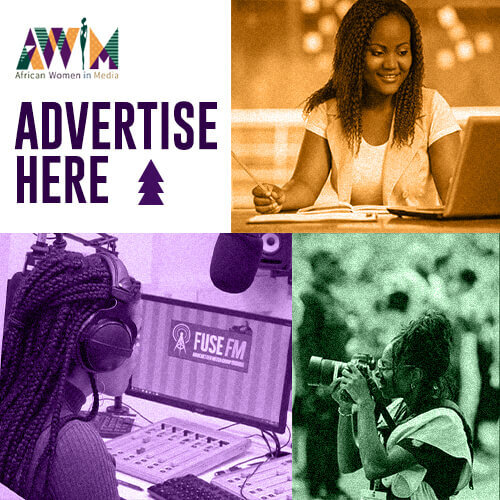Groundbreaking Workshop on AI and Technology-Facilitated Gender-Based Violence at AWiM24
Trending
Sunday May 25, 2025
Trending

Rejoice Amuntenya and Mehafo Amunyela are two students who have started the first ever Namibian magazine for young adults: Afterbreak Magazine. AWiM speaks to both of them to hear how it all began and what they hope to achieve for youths in Namibia.
—
Magazines and newspapers are the most notable traditional forms of media. Print editions paved a path for the media yet to come.
Now online magazines are influencing the future industry professionals. One of them is Afterbreak Magazine.
Founded by Rejoice Amuntenya and Co-founder Mehafo Amunyela who are two young females navigating the digital media space, the magazine is one of the first in Namibia of its kind.
“I used to love reading magazines when I was growing up, specifically Team Zone which is a South African print magazine as well as the Drum,” Rejoice shares “but, it got to a point where I could no longer relate to their content, and I couldn’t enter their competitions because of my location.”
In Namibia, there is a scarce number of magazines. Even more so, magazines targeting younger audiences: “Generally, we have very few magazines here, when we first started, we only knew of the Monochrome magazine.” Rejoice adds, “Since we released ours, we are seeing a few more magazines coming out which is great.”
Launching Afterbreak Magazine at the age of 15, the enterprising young women saw a gap in the market and a cause dear to her heart.
Since the two South African magazines could only meet half of her needs, Rejoice felt inspired to create a magazine that the youth in Namibia could relate to instead.
Inside the digital magazine are topics ranging from life experiences to fashion, beauty, travel, and health. Each theme with the goal to inspire, educate and empower young Namibians who are actively looking to advance their careers, interests, and their communities.
To help formulate these stories Afterbreak Magazine now consists of a team of 15 contributors who write and pitch stories to Rejoice and Mehafo. In the initial stages, they were the only two contributors producing stories.
Before this, the pair were just admirers of each other’s blogs: “Mehafo was a blogger back then and I really believed in her writing,” Rejoice tells AWiM News, “So I sent her a message asking if would be interested in assisting me with the magazine.”
Attending the same high school, both girls had known each other and even appreciated each other’s work without ever collaborating on a project together.
“I used to follow Rejoice’s blog because she had been blogging for a long time and she was actually where I got a lot of my inspiration from,” Mehafo expresses, “When she messaged me, I was so thrilled and happy that I couldn’t refuse.”
Since 2017, the two writers and now co-founders have been a team ever since.
Their love of magazines has also been a consistent feeling that they both have in common.
“I also used to love magazines like the Drum because for me it was like an escape from reality, a chance to see how other people are living and a chance to see what other countries are doing well,” Mehafo explains.
For Rejoice, it was the visual experience and the content inside the magazine that she would look forward to: “I used to get caught up playing the games inside the magazine but what I also found to be the best bit for me was reading inspiring stories.”
She adds: “The ones that share how people who started from nowhere are making it to the top and achieving so many things.”
Similar inspiring stories representing the youth in Namibia are featured on the upcoming magazine’s website.
“So far, the response has been really good,” Mehafo tells us “We have had a couple of direct messages on our social media accounts where our readers have told us they love what we are doing and how they appreciate it so much.”
Having run the magazine for five years now, the two innovators have built an online community where young adults can feel heard and connected.
However, the journey to seeing great responses has not come without any challenges.
When the two co-founders are not managing or directing the Afterbreak Magazine team, they spend the other half of their time as university students, studying two vastly different courses.
At the University of Namibia, Mehafo is completing a degree in Media. She also works as a radio journalist for Desert Radio where she hosts the Youth Central show in the afternoon.
“Managing all of these things hasn’t been easy to do in the slightest, it’s been very hectic” the media student admits, “But I power through and try to multitask and prioritise where possible.”
She has not only learned how to navigate the challenges of running a magazine and completing her education but how to address gendered issues within the broadcast industry.
“Although I haven’t experienced many of the horrible challenges young female journalists are going through because I work in a place where the work environment is healthy,” Mehafo tells AWiM, “Now and then, I do face harassment, but I deal with it by telling that person I don’t appreciate this behaviour and if it continues I am not afraid to take the issue to the HR department.”
Rejoice, on the other hand, is a computer science student at the Namibian University of Science and Technology. She has also managed to find a system of balance that helps her to achieve her goals for Afterbreak Magazine and her studies but the other challenge she has had to overcome is the perception of her male counterparts.
“In computer science, there is a lot of discrimination women face” Rejoice explains, “Men in the industry tend to mark women down, believing they are only suitable for job roles like marketing and HR instead.”
Despite the views of others in the computer science industry, she remains determined to prove them wrong by seeing her course through and using it to fuel her career in digital spaces.
“One of the main reasons we started Afterbreak Magazine is to educate females and males in Namibia,” Mehafo adds, “Even though our team is mostly made up of females right now, we are determined to inform both genders on important topics that will help them grow and achieve bright futures.”
In the next coming years, the two cofounders hope to be able to provide education and career development resources: “Through our magazine we want to offer young adults and students paid internships, we have been there and understand how difficult it can be to not have the opportunities you need and so we want to make sure we provide those opportunities,” Rejoice states.
One of the factors that have limited the team at Afterbreak from providing these resources is the lack of funding they have received since the magazine has grown.
“Lack of funding is an unfortunate scenario that has bedevilled a great number of African literary magazines and companies,” Magazine expert Nzube Nlebedim states.
When the two Namibian co-founders began their publication, they would use their allowances and ask their parents to help cover the finances involved in running a digital magazine.
Now that the young professionals are in their 20s and Afterbreak Magazine is gaining more traction, the sources of funding are different, external providers are needed.
“We were so young and naïve when we launched, we had no idea of how to acquire funding,” Rejoice shares, “Over the last few years, we have learnt more about the ins and outs of running a professional and growing independent magazine online, now we know where to apply for financial support even though it is still difficult to get.”
Last year, Afterbreak Magazine finally received its first source of funds which is helping the team to start implementing the plans they have for young Namibians.
“When we started, we didn’t even think that we would ever make money from the magazine,” Mehafo adds, “we just did what we loved and what we felt we needed to do because we believed in our cause and still today that’s why we do everything we can for our readers.”
Worldwide the number of users in the digital newspapers and magazines segment is expected to rise to nearly 2,000 million users by 2027 according to Statista. For online magazines in Namibia, the number of readers each year is also set to increase by 0.1 million, showing a promising future for Afterbreak Magazine.
“I see Afterbreak being like the Seventeen of Namibia,” the radio journalist declares, “We will be the go-to magazine for young people with the most current information on topics they can relate to and see themselves in.”
Hoping to be a colourful, fun but educational magazine, Afterbreak will pave a path for the young ladies and males aspiring to make their mark in the world.
For the young females who want to start their own magazines, Rejoice encourages them to go for it: “I think there are so many opportunities that we also haven’t come across and we might miss sometimes but the fact that there are very few magazines in Namibia is a chance for you to take that space and do the most inside of it.”
The future of Namibian magazines is blossoming with more digital magazines to come and an inspired generation to help elevate them.
This article is part of African Women in Media (AWIM) Graduate Trainee Programme in collaboration with Fojo Media Institute
We’re not gonna spam. We’ll try at least.

Copyright 2020. African Women In Media
Copyright 2020. African Women In Media
Recent Comments